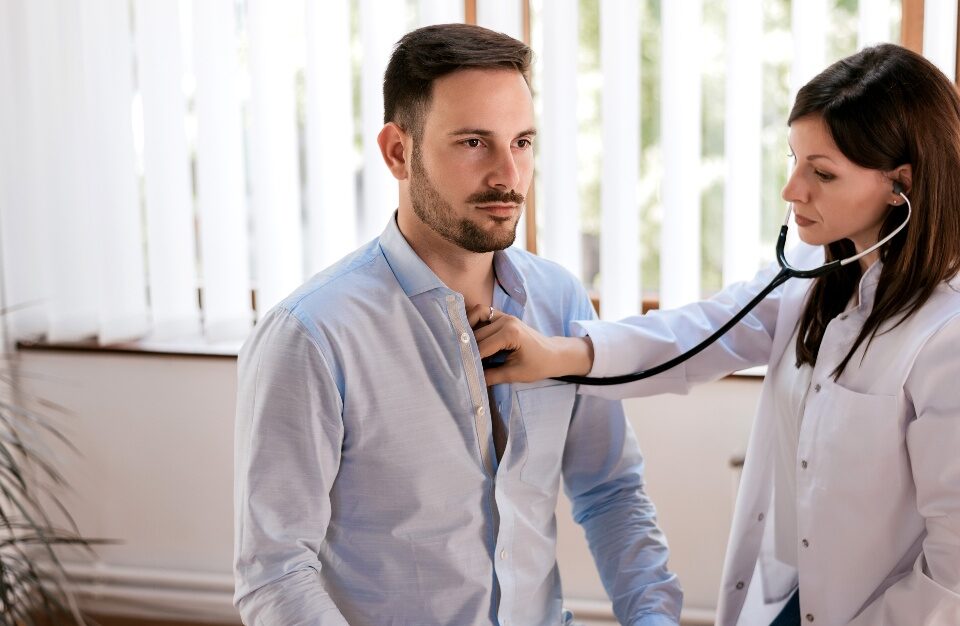- Call Us Today!
- 718-475-1700
- info@QualityFirstUrgentCare.com
Spring has sprung and we are ready to get active. In the beginning of the active lifestyle season and sports season, injuries abound. I was at a recently at a yeshiva basketball game and saw a student trip and fall and strike his head on the floor. His head hitting the floor made a booming sound. He did not lose consciousness but, due to the severity of the injury and the resultant headache and confusion, he required prompt medical evaluation.
One of the most serious injuries is traumatic brain injury (TBI). There has been significant media coverage regarding football players and the long-term effects of head trauma. But head trauma can happen in almost any activity that causes blunt or penetrating force to the head. Injuries are the leading cause of death among persons ages 1-44. The groups at the highest risk for mild TBI include: Infants and children (ages 0 to 4); children and young adults (ages 5 to 24); and older adults (ages 75 or older). The most common causes of mild traumatic brain injuries are: falls; motor vehicle trauma; accidents; assaults; and sports. This article will discuss different types of head injuries, how to prevent them, and when they should be evaluated.
Classification of TBI
Not all head trauma lead to traumatic brain injury. If there is a head injury that does not cause neurological symptoms it’s classified as a “closed head injury.” TBI is classified on a spectrum of severity: mild traumatic brain injury (MTBI, also called a concussion) that includes mild, temporary brain symptoms to severe head trauma that can lead to permanent disability or death.
Urgent Care
Not all head trauma needs to be evaluated in the emergency department. Minor head injuries need to be evaluated quickly, but do not necessarily require an ambulance to the ED. You can call your doctor or go to an urgent care center. This is for head injuries that: did not cause loss of consciousness; caused only mild dizziness or nausea; caused only mild headache but without any vision disturbances. Many people think that if there is no loss of consciousness (LOC) then it cannot be a concussion, but 90% of concussions do not have loss of consciousness associated with the injury. It is important to use the following list of possible symptoms to gauge the severity and get appropriate medical care. If you are unsure as to the severity of the head injury always call an ambulance.
Emergent Care
The following symptoms that follow a head injury need to be evaluated immediately in the Emergency Department:
Severe head trauma; a fall from a significant height; a fall that causes head and face bleeding or bruising; loss of consciousness or delayed loss of consciousness; vomiting; changes in mentation: such as confusion, restlessness, agitation, or drowsiness; weakness, numbness or decreased coordination; amnesia; seizures or convulsions; slurred speech; a blow to the head in someone who takes blood thinners.
Children must be seen at the Emergency Department immediately if they received a strike to the head or if their head was shaken due to a blow or jolt and they have the danger signs just mentioned or if they will not stop crying and cannot be consoled, or if they will not nurse or eat.
Stabilizing Neck
If there is a serious head injury there may also be neck trauma. You should not move this person. The neck needs to be stabilized in order to prevent an exacerbation of spinal injuries. If they must be moved, for example, if the person starts vomiting or if they are in the middle of traffic, move them carefully without turning their head, while stabilizing their neck.
Prevention
There are many ways to prevent TBI: when in cars use proper car seats and booster seats for children, and always wear seatbelts. When riding bikes or playing contact sports always wear helmets. Make sure the home is safe. For seniors: remove tripping hazards from the home; make sure there are no slipping hazards in bathroom; improve lighting in the home; maintain regular physical activity. For children: Install window guards to prevent falls from open windows; install safety gates at the top and bottom of stairs.
Conclusion
When I practiced in the E.R. there were many head traumas and strict treatment protocols had to be followed. When I started running urgent care clinics, I kept the same strict protocols including ensuring the availability of CT scans in the clinic. CT scans are the preferred diagnostic modality for head injuries. The evaluation and treatment in the private sector should be as strict as those in the E.R. We can do our part in preventing traumatic brain injury and getting prompt medical evaluation and treatment.
Written by: Jacob Gerlitz





